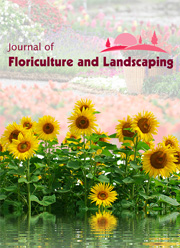ORCHIDS GENETIC DIVERSITY FOR BLOOMING FLORICULTURE INDUSTRY
DOI:
https://doi.org/10.25081/jfcls.2017.v3.3569Abstract
India is bestowed with different agro-climatic conditions and soil. This makes the country particularly suitable for growing a wide variety of horticulture crops especially flowers. Among the flowers, the orchids represent a fairly young, highly diverse, and successful family of flowering plants, the Orchidaceae. It is still in an active state of speciation. Some of their botanically significant features are presence of intricately fabricated and long-lasting flowers. The numerical strength of orchids, in terms of species have been variously assessed between 17,000 and 35,000. The orchids are in cosmopolitan in distribution. Rhizanthella gardneri and R. slateri are subterranean in habit and Corallorrhiza innata a rootless parasite. The orchids are essentially out breeders, having adapted to insect pollinations. India with a vast geographic expanse and climatic ones ranging from tropical to temperate, supports a rich diversity of flora. The orchids have naturalized here in great profusion; the North Eastern, the Himalayan, and the Peninsular regions (on the main land) and the Andaman and Nicobar region (off shores) are the major orchid habitats in the country, while the occurrence of nearly 1100 species in 157 genera are representing all the major orchid tribes. Efforts have been made to evolve strategies for ensuring the survival and maintenance of genetic diversity that still exists in these plants. In this connection, one need not overstress the importance of orchid breeding. Unfortunately, orchid breeding is still in infancy in the country. Now, there is a need to improve floriculture breeding to reduce the foreign exchange for good quality planting materials. Hence, it is important to explore the orchid wealth of the country. Important floriculture traits, geographical distribution and utility of orchids will also be discussed at length. Further, there is a need to create suitable varieties to different agro-climatic horti-silvi system and socio-economic condition. Since floriculture trade and consumption are increasing rapidly worldwide, there is a blooming opportunity for India to achieve better growth in its production and export due to presence of high amount of diversity in indigenous orchids flora, thus earning valuable foreign exchange through florist trade, nursery of plant saplings, potted plants, bulb and seed production, micro-propagation and other value added products of orchids.






 .
.